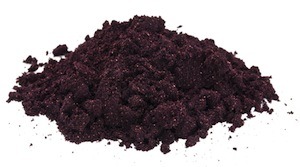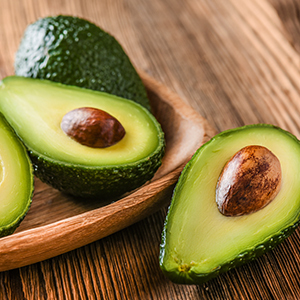
According to the Center for Human Nutrition at UCLA’s David Geffen School of Medicine, evidence overwhelmingly supports the health benefits of adding berries to your diet. [1] Frequently cited as fabulous sources of antioxidants and vitamins, nearly anyone can benefit by including more berries in their diet. [2] Raspberries, strawberries, and mulberries are great, but if you’re looking for something new, consider trying maqui berries!
What are Maqui Berries?
Maqui berries are a product of the Aristotelia chilensis plant, which grows wild in Chile and Argentina. The plant produces delicious and highly nutritious berries that have generated a lot of attention due to the health-supporting compounds they contain. The subject of modern research and hundreds of years of traditional use, maqui berries, when compared to other berries, are the standout winner as one of the richest sources of antioxidants available. [3]
Why are they Beneficial?
The berries, which are a deep, rich, vibrant purple color, get their color from a pigment called anthocyanin. Much more than just a source of color, anthocyanin is resistant to redness and responsible for much of the antioxidant power in maqui berries. [4]
In South American traditional medicine, maqui has been used to address symptoms of diarrhea and fever. Indigenous communities in Chile have used the leaves of the plant to dress wounds. Why? Long used as an astringent, research has confirmed the plant has cleansing properties. [5]
Supplementing with Maqui Berries
References (5)
- Seeram NP. Berry fruits: compositional elements, biochemical activities, and the impact of their intake on human health, performance, and disease. J Agric Food Chem. 2008 Feb 13;56(3):627-9. doi: 10.1021/jf071988k. Epub 2008 Jan 23.
- Schreckinger ME, Lotton J, Lila MA, de Mejia EG. Berries from South America: a comprehensive review on chemistry, health potential, and commercialization. J Med Food. 2010 Apr;13(2):233-46. doi: 10.1089/jmf.2009.0233. Review.
- Miranda-Rottmann S, Aspillaga AA, Pérez DD, Vasquez L, Martinez AL, Leighton F. Juice and phenolic fractions of the berry Aristotelia chilensis inhibit LDL oxidation in vitro and protect human endothelial cells against oxidative stress. J Agric Food Chem. 2002 Dec 18;50(26):7542-7.
- Escribano-Bailón MT, Alcalde-Eon C, Muñoz O, Rivas-Gonzalo JC, Santos-Buelga C. Anthocyanins in berries of Maqui (Aristotelia chilensis (Mol.) Stuntz). Phytochem Anal. 2006 Jan-Feb;17(1):8-14.
- Mølgaard P, Holler JG, Asar B, Liberna I, Rosenbæk LB, Jebjerg CP, Jørgensen L, Lauritzen J, Guzman A, Adsersen A, Simonsen HT. Antimicrobial evaluation of Huilliche plant medicine used to treat wounds. J Ethnopharmacol. 2011 Oct 31;138(1):219-27. doi: 10.1016/j.jep.2011.09.006. Epub 2011 Sep 12.
†Results may vary. Information and statements made are for education purposes and are not intended to replace the advice of your doctor. If you have a severe medical condition or health concern, see your physician.







